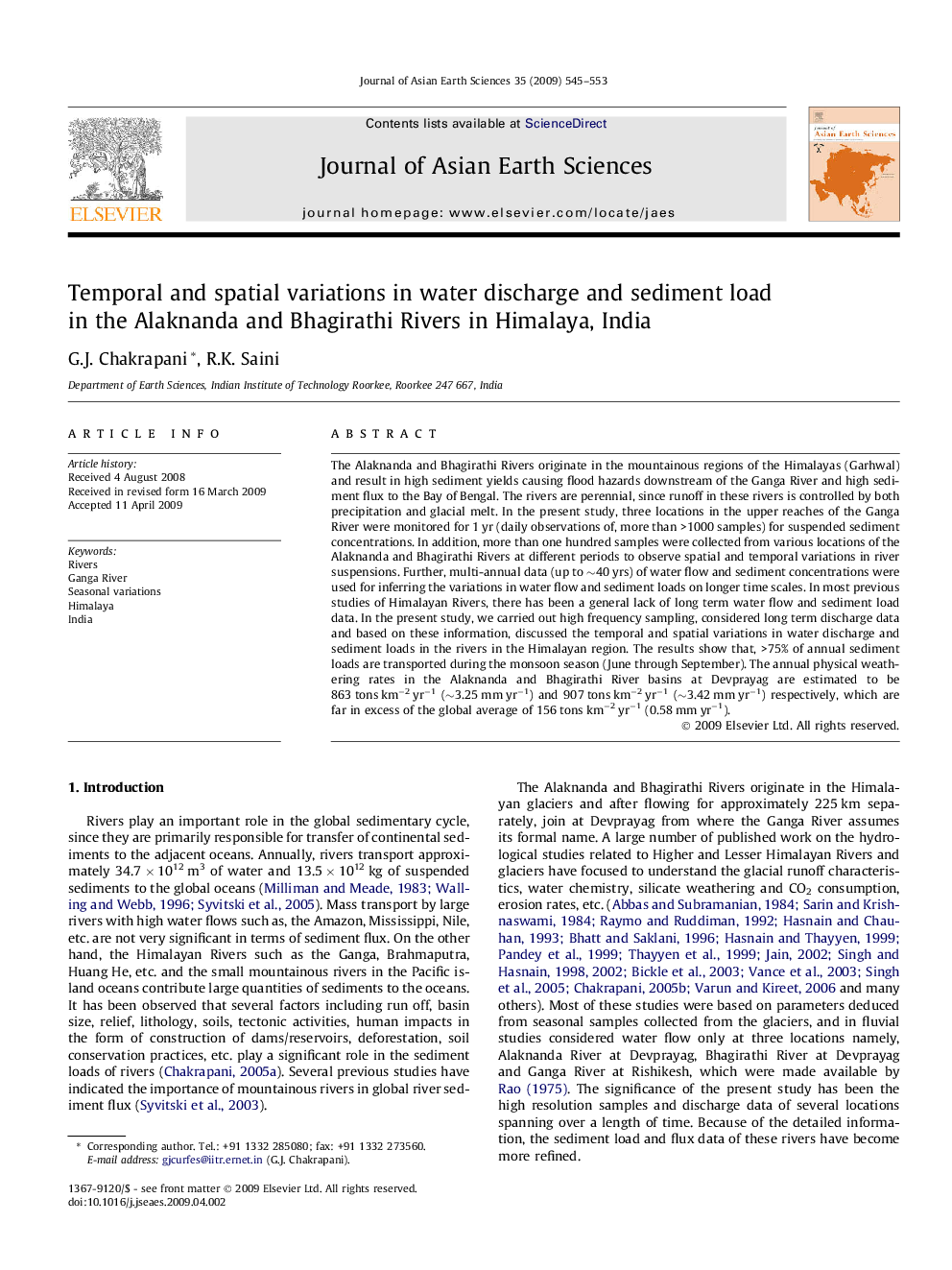| کد مقاله | کد نشریه | سال انتشار | مقاله انگلیسی | نسخه تمام متن |
|---|---|---|---|---|
| 4732115 | 1356843 | 2009 | 9 صفحه PDF | دانلود رایگان |

The Alaknanda and Bhagirathi Rivers originate in the mountainous regions of the Himalayas (Garhwal) and result in high sediment yields causing flood hazards downstream of the Ganga River and high sediment flux to the Bay of Bengal. The rivers are perennial, since runoff in these rivers is controlled by both precipitation and glacial melt. In the present study, three locations in the upper reaches of the Ganga River were monitored for 1 yr (daily observations of, more than >1000 samples) for suspended sediment concentrations. In addition, more than one hundred samples were collected from various locations of the Alaknanda and Bhagirathi Rivers at different periods to observe spatial and temporal variations in river suspensions. Further, multi-annual data (up to ∼40 yrs) of water flow and sediment concentrations were used for inferring the variations in water flow and sediment loads on longer time scales. In most previous studies of Himalayan Rivers, there has been a general lack of long term water flow and sediment load data. In the present study, we carried out high frequency sampling, considered long term discharge data and based on these information, discussed the temporal and spatial variations in water discharge and sediment loads in the rivers in the Himalayan region. The results show that, >75% of annual sediment loads are transported during the monsoon season (June through September). The annual physical weathering rates in the Alaknanda and Bhagirathi River basins at Devprayag are estimated to be 863 tons km−2 yr−1 (∼3.25 mm yr−1) and 907 tons km−2 yr−1 (∼3.42 mm yr−1) respectively, which are far in excess of the global average of 156 tons km−2 yr−1 (0.58 mm yr−1).
Journal: Journal of Asian Earth Sciences - Volume 35, Issue 6, 26 August 2009, Pages 545–553